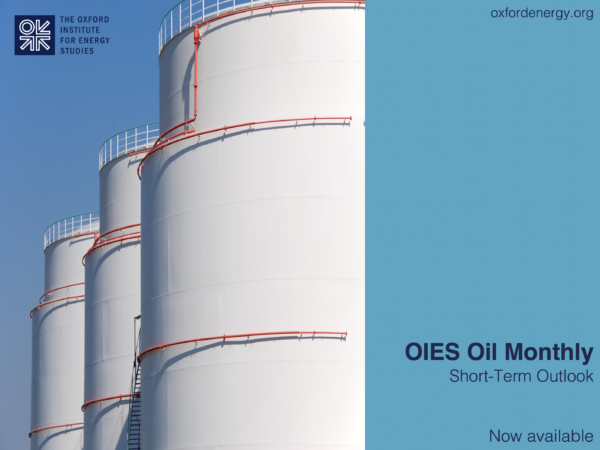OIES Oil Monthly – Issue 10
The new issue of OIES Oil Monthly, including our latest short-term oil market outlook to 2023, is now available.
This month’s featured In Focus piece focuses on the key features of OPEC+ in the current cycle, the new dynamics emerging and the factors shaping its next move ahead. The decisions and measures made by OPEC+ over the past few months have paid off and have put the Group in the driving seat, able to cope with most of the downside risk barring a collapse in oil demand. The challenge for OPEC+ beyond 2022 may shift towards managing upside risks if demand surprises on the upside, the US shale and non-OPEC response remains limited, Iran fails to ramp up production and/or if outages and geopolitical disruptions become widespread. But if such a context does materialise, most OPEC+ members will be producing close to, or at, maximum capacity and the ability of OPEC+ to respond to shocks will diminish.
Our reference forecast for Brent is downgraded to $70.8/b from $71.6/b in 2021 and $76.6/b from $80.9/b in 2022 but remains relatively unchanged at $77.1/b in 2023. Following the $13/b price plunge in daily Brent end-November on the emergence of the Omicron variant, we have revised lower Q4 2021 price by $3.4/b to $81/b from $84.4/b previously. Lower than expected gas-to-oil switching and the market’s shift to surpluses in 2022 keep prices in the mid $70s range and account for the $4.3/b downward revision in 2022 this month. Prices are expected to strengthen again in 2023, supported mainly by supply factors. Demand side risks build on the downside near term around our reference forecast, mainly driven by Omicron concerns over its impact on global oil demand and in particular jet fuel. Supply risks shift the balance to the upside again ending 2022, driven by the inability of some OPEC+ producers to meet their targets, US shale sticking to capital discipline and Iran failing to ramp up production if a nuclear deal is not reached. Our analysis of balance of risks indicates that prices remain confined in the $70/b and $90/b range over our forecast horizon despite renewed market uncertainty.
Global oil demand growth is downgraded to 5.3 from 5.4 mb/d in 2021 and to 3.5 mb/d from 3.6 mb/d in 2022 and remains unchanged at 2.1 mb/d in 2023. Although the emergence of the Omicron variant adds new downside risks to the outlook, we remain cautious about the extent of negative effects on oil demand recovery which is seen slowing down rather than reversing. An immediate near-term impact is seen in the OECD in terms of regions and on jet fuel demand in terms of products, but negative effects could be quickly reversed. In the non-OECD, China’s oil demand is headed towards a soft start to 2022, but growth still has upside potential in H2.
Global supply growth is upgraded to 1.5 mb/d from 1.3 mb/d in 2021, but growth is lowered to 5.7 mb/d from 5.9 mb/d in 2022 and to 1.8 from 2.2 mb/d in 2023. The ability of OPEC+ producers to meet their targets will be a key dynamic in 2022, as involuntary compliance is expected to rise. As non-OPEC supply continues to recover, crude oil production growth remains unchanged at 2 mb/d in 2022, underpinned mainly by US, Russia and Canada.
The market deficit in 2021 in our reference scenario stands at -0.8 mb/d, followed by a 1.4 mb/d and 1.2 mb/d surplus in 2022 and 2023. Despite new demand concerns however, a more balanced market remains plausible in 2022 in some of the other scenarios we consider.
